Reviews
The Child Murders at Robin Hood Hills
Joe Berlinger and Bruce Sinofsky
USA, 1996
Credits
Review by Matthew Derby
Posted on 20 October 2011
Source New Video Group DVD
Categories 31 Days of Horror VIII
It starts with an image of three men standing on a drainage pipe that runs crosswise over a muddy stream. Two dirt bikes lay on their sides at the men’s feet. The handheld camcorder shakes as the woman capturing the footage calls out, “where were these found, guys?” One of the men silently points into the murky water while a title fades up in plain text reading “Police Crime Scene Video, May 6th, 1993.” For a moment the only sounds in the world are the distorted bleating of a walkie talkie and the slow churn of the stream under the men’s feet, and it is chillingly clear that the rest of Joe Berlinger and Bruce Sinofsky’s unsettling documentary Paradise Lost will be haunted by the ghosts of the children who once rode those bikes.
But Paradise Lost is only partially about the boys, who were hogtied with their own shoelaces, mutilated, murdered, and dumped in a small wooded area in West Memphis Arkansas the night before the crime scene footage was taken. What’s most fascinating and horrifying about the film - beyond the stark and grisly nature of the crime itself - is how the community surrounding the murdered boys, from their parents to the detectives working the case to the media coverage of the trials that followed, seems much more invested in finding a perpetrator on whom it can focus its rage than on determining what actually happened on the night in question. As it progresses, the subjects of the film stray further and further from the known facts as they work to generate and sustain a fictional chain of events so powerful that it eventually supplants reality even in the minds of the innocent scapegoats at its center.
The crime scene itself is almost completely devoid of physical evidence - no murder weapon, no footprints, fibers or DNA, and oddly no blood in the area despite one of the boys having lost nearly five pints of it - but the residents of West Memphis are undaunted by this curious dearth of hard facts. In less than a month they manage to stitch together a narrative involving satanic rituals, human sacrifice, and witchcraft. A news segment from June 7th, 1993 reveals that a teenager named Jesse Misskelley has confessed to watching two other teens - Jason Baldwin and Damien Echols - rape and murder the boys in the woods. Misskelley’s statement intimates that Satanism may have motivated the crime. The anchorwoman claims, “Since the very beginning of the investigation, people from all around West Memphis have come forward with stories of satanic cults.” A Baptist preacher interviewed for the segment tells of several conversations between his youth minister and Damien Echols where Echols claimed he “had a pact with the devil” and was “going to hell.” Although Misskelley underwent twelve grueling hours of interrogation before proffering his confession, which was riddled with errors and second-guessings, and even though there is no other evidence linking Echols to the crime, the community quickly props Echols up as the mastermind of a plot to sacrifice the children in the woods and draw power from their young blood, with Baldwin as his quiet sidekick and Misskelley a bewildered accomplice. All it takes, the film demonstrates, is the suggestion of the thinnest layer of connective tissue between a senseless crime and a group of teenagers in Metallica t-shirts to comprehensively alter a person’s perception. Berlinger and Sinofsky let their cameras roll as the key players in the case take center stage, one after another, skinning the handful of facts about the case with their own elaborate folklore, which is spread like a virus by ratings-hungry newscasters who fan the flames of their viewers’ imaginations.
Paradise Lost is a documentary. It’s composed of real testimony from the actual people involved in the case, but to say that it depicts reality is a risky proposition, and throughout the film Berlinger and Sinofsky remind us how dangerously slippery a concept like ‘reality’ is. Whenever they cut to footage of a newscaster describing the trial proceedings, they’re careful to preface the authoritative soundbite with pre-roll footage of the anchorperson rehearsing (and flubbing) their lines, or just mugging for the camera as they wait to deliver ‘the news.’ We watch as they seamlessly transition from the real world to the world of news reporting, where they frame their descriptions of court proceedings with references to witchcraft and Satanism. We’re witness to the real-time transfer of the crime narrative from the newscasters’ mouths to the minds of their audience.
The central figures in the case are also shown to be constantly shifting into different versions of themselves. Pam Branch, mother of one of the murdered boys, wears a provocative red dress to a news interview early in the film and responds flirtatiously to the reporter’s questions as if she’s being questioned at a tailgate party before a sporting event—later, she coldly relates in gory detail how she plans to seek revenge on the suspects. John Mark Byers, stepfather of Christopher Byers (who by the extent of his injuries appears to have been the focus of the crime) stands in the creek bed where the boys were found and delivers a fiery sermon for the camera in a trucker’s cap and overalls. “To me,” he says, “this place as I stand, is like hell on earth.” He then offers a surprisingly detailed blow-by-blow account of the murders. He lists the names of the suspects and proclaims, “I hope your master the devil takes you soon… and the day you die… I’m going to come to your graveside… and I will spit on your graves, and I’ll curse the day you were born, and… I might have to let go of some other bodily functions as well. I promise you as God as my witness, I’ll visit all three of your graves.” Shortly after this vitriolic outburst, Berlinger and Sinofsky show John Mark Byers leading his church’s congregation in a hymn. He wears a pressed suit and sings with a rich, deep voice that seems to come from an entirely different person than the man we just saw shouting in the primordial gloom of the crime scene. We listen to the hymn in its entirety, and it is one of the most powerful segments of the film in its depiction of the extreme moral pendulum on which the community’s consciousness swings—especially when it’s revealed that Byers beat his son shortly before the murders took place, and that a knife he owned had traces of blood that matched his stepson’s blood type.
The most agonizing example of the totalizing power of the crime narrative comes when Jason Baldwin’s attorney asks him whether he thinks his friend Damien Echols is capable of committing the murders. Early on in the film Baldwin is shown quietly defending himself and Echols, saying, “we would never do anything like that… I could never hurt an animal or a human being.” Later Baldwin and Echols are seen in a rare moment together, joking about hiding from the police on the night they were arrested, and their giddiness betrays an innocence and camaraderie that stands in stark relief against the pervasive doom of the rest of the film. Echols later gives a very tender portrayal of his relationship with Baldwin, saying that they were like brothers, always sleeping over at each others’ houses, wearing each other’s clothes and collecting snakes to the soundtrack of bands they loved such as Metallica, Slayer, and Megadeth. As Baldwin waits with his attorney for the jury’s verdict, the attorney asks, “Do you think Damien could’ve killed those little boys?” The camera is focused on Baldwin, and he considers his response for nearly twenty seconds before quietly uttering, “They made it seem like he did.” The attorney, who can’t help but pursue the line of questioning, asks, “What do you think?” Baldwin says he doesn’t know. His expression in this moment is one of fear, exhaustion, resignation, and something else—an acknowledgement that reality, or what he’d previously accepted as reality, is dead. Like Winston Smith at the end of 1984 who must accept that two plus two equals five to go free, Jason Baldwin is forced to betray his friend in front of the attorneys gathered around him, in front of the documentarians’ cameras, and by extension, in front of us, for time eternal. “If you were on that jury, would you have a hard time letting him go,” the attorney asks, “based on what you heard?”
“Yes,” Baldwin says.
Shortly afterward, the two are convicted of Capital Murder. Echols is sentenced to die by lethal injection, and Baldwin is given life in prison. Despite the conclusion of the trial, you feel no sense of closure as the credits roll. Whether or not the West Memphis Three murdered the boys (recently uncovered evidence points more conclusively to their innocence, and indeed, they were set free earlier this year, in large part because of the influence of the film and its sequels), the monster still runs free. The fact that the teenagers could be convicted on the basis of hearsay and conjecture - a collection of myths and stories spun by a fearful community closing its ranks against the unknown - is the true specter. Late in the film Damien Echols muses that, “Even after I die people are going to remember me forever. People in West Memphis will tell their kids stories—it’ll be sort of like I’m the West Memphis Boogeyman.” It’s no coincidence that this is the last sequence in the film. The final word on the case of the Robin Hood Hills murders is the myth created in its wake: The three boys were murdered in a wild, orgiastic ritual by a group of misfit teens in black t-shirts and jeans, because who else would kill a child in cold blood? Bash in his face and cut out his testicles? Leave his naked body to rot in a gully? It’s a modern folktale, drawn out of the chaos of time and passed around the campfire, a frenzied attempt to put some kind of face on the unknowable darkness that surrounds us.
More 31 Days of Horror VIII
-
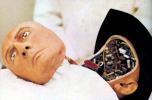
Westworld
1973 -
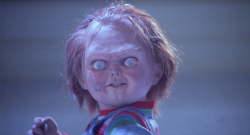
Child’s Play
1988 -
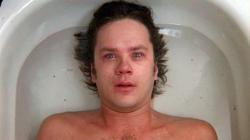
Jacob’s Ladder
1990 -
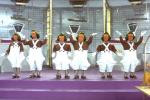
Willy Wonka and the Chocolate Factory
1971 -
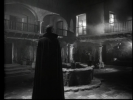
El Vampiro
1957 -
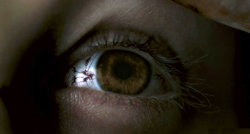
28 Weeks Later
2007 -
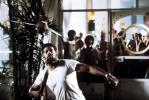
Piranha II: The Spawning
1981 -
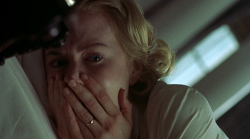
The Others
2001 -
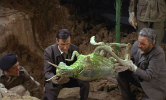
Quatermass and the Pit
1967 -

I Know Who Killed Me
2007 -
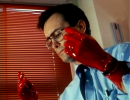
Bride of Re-Animator
1990 -
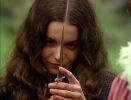
Alucarda
1978 -
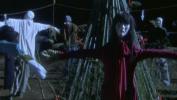
Kakashi
2001 -

Seizure
1974 -
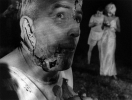
Night of the Living Dead
1968 -
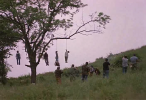
Night of the Living Dead
1990 -
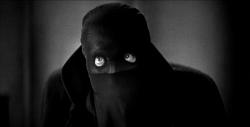
The Bat Whispers
1930 -

Miracle Mile
1988 -

Tintorera
1977 -
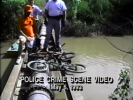
Paradise Lost
1996 -

The Cars that Ate Paris
1974 -

Ginger Snaps
2000 -
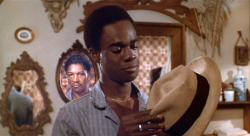
J.D.’s Revenge
1976 -
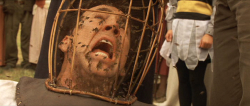
The Wicker Man
2006 -

Black Water
2007 -
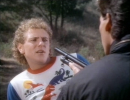
Don’t Panic
1988 -
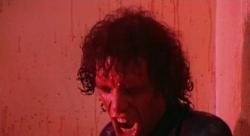
The Driller Killer
1979 -

Targets
1968 -

Mahal
1949 -
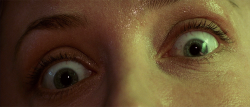
Event Horizon
1997
We don’t do comments anymore, but you may contact us here or find us on Twitter or Facebook.



